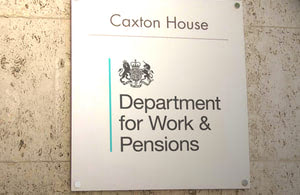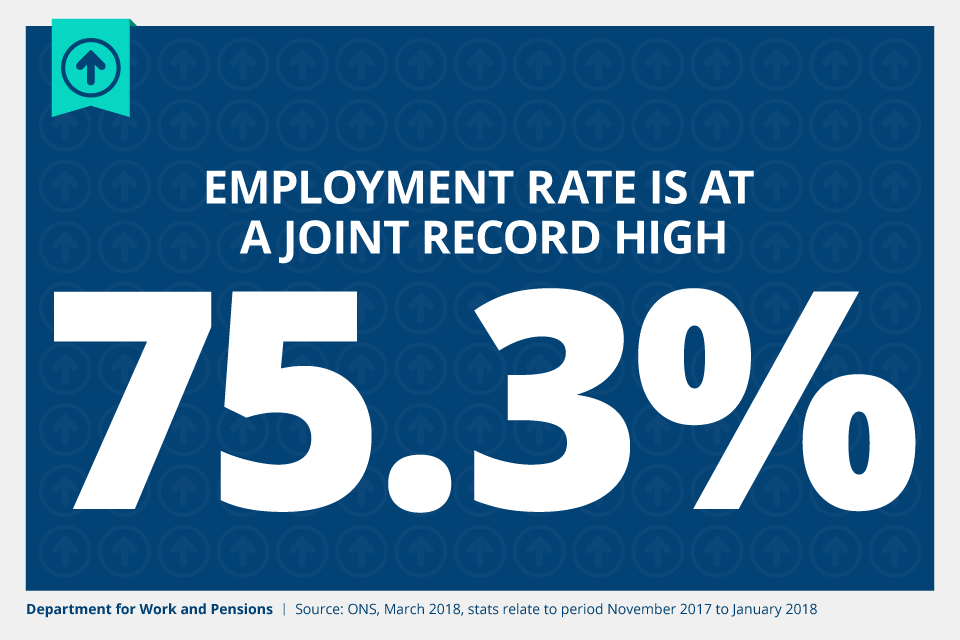Employment rate reaches joint record high

The employment rate is at 75.3% – up from 74.6% compared to a year ago and the joint highest since records began.
Figures released by the Office for National Statistics show that 402,000 more people have moved into employment in the last year.
The unemployment rate (4.3%) has not been lower since 1975, and the number of people out of work is down by 127,000 compared to a year ago.
The number of people not working and not looking for work fell by 158,000 on the year. The rate has not been lower since records began.

Since 2010, over 70% of employment growth has been in permanent roles, with around 70% in higher skilled work.
Secretary of State for Work and Pensions Esther McVey said:
Getting a job means securing an income for a family and the chance to build a better future. That’s why up and down the country we are doing all we can to help people into work.
And from next month, we’ll be taking thousands more people out of paying tax and also increasing the National Living Wage, benefiting those on the lowest pay and making sure they keep more of what they earn.
In fact by raising the National Living Wage we have ensured that the lowest earners have seen their wages grow by almost 7% above inflation since 2015.
The amount of money people can earn before they start paying income tax will rise in April 2018 from £11,500 to £11,850. From 1 April 2018, the National Living Wage – the minimum paid to employees aged over 25 – will rise from £7.50 an hour to £7.83, equating to a £600 annual pay rise for full-time workers on basic pay.
This comes as we have reformed welfare to make work pay, backed businesses to take more people on, and built a stronger, fairer economy.
But we want to help even more people benefit from a well-paid job. That’s why we are:
- improving the welfare system with Universal Credit, which helps people move into work faster and to stay in work longer than under the old system
- introducing a modern Industrial strategy to help businesses create better, higher-paying jobs in every part of the UK
- helping people stay in work longer with our Fuller Working Lives strategy, which supports employers to recruit, retrain and retain older workers
- tackling inequalities in employment highlighted by the Race Disparity Audit, through targeted support in 20 areas around the country and £90 million announced by the Prime Minister to help young people
Today’s figures also show:
- since 2010, the number of people in employment has increased by around 3.2 million
- 83.4% of employment is in the private sector, with 16.6% in the public sector
- the female employment rate is at a record high of 70.9%, with over 15 million women in work – a rise of 234,000 on the year
Separate figures out today showed that 770,000 people are now on Universal Credit as the rollout of the new benefit continues. Of these, 39% were in employment (300,000). Through Universal Credit, people are keeping more of their earnings as their Universal Credit payment gradually adjusts when their income climbs.
Read the Labour Market Statistics – March 2018 from the Office for National Statistics.











Responses